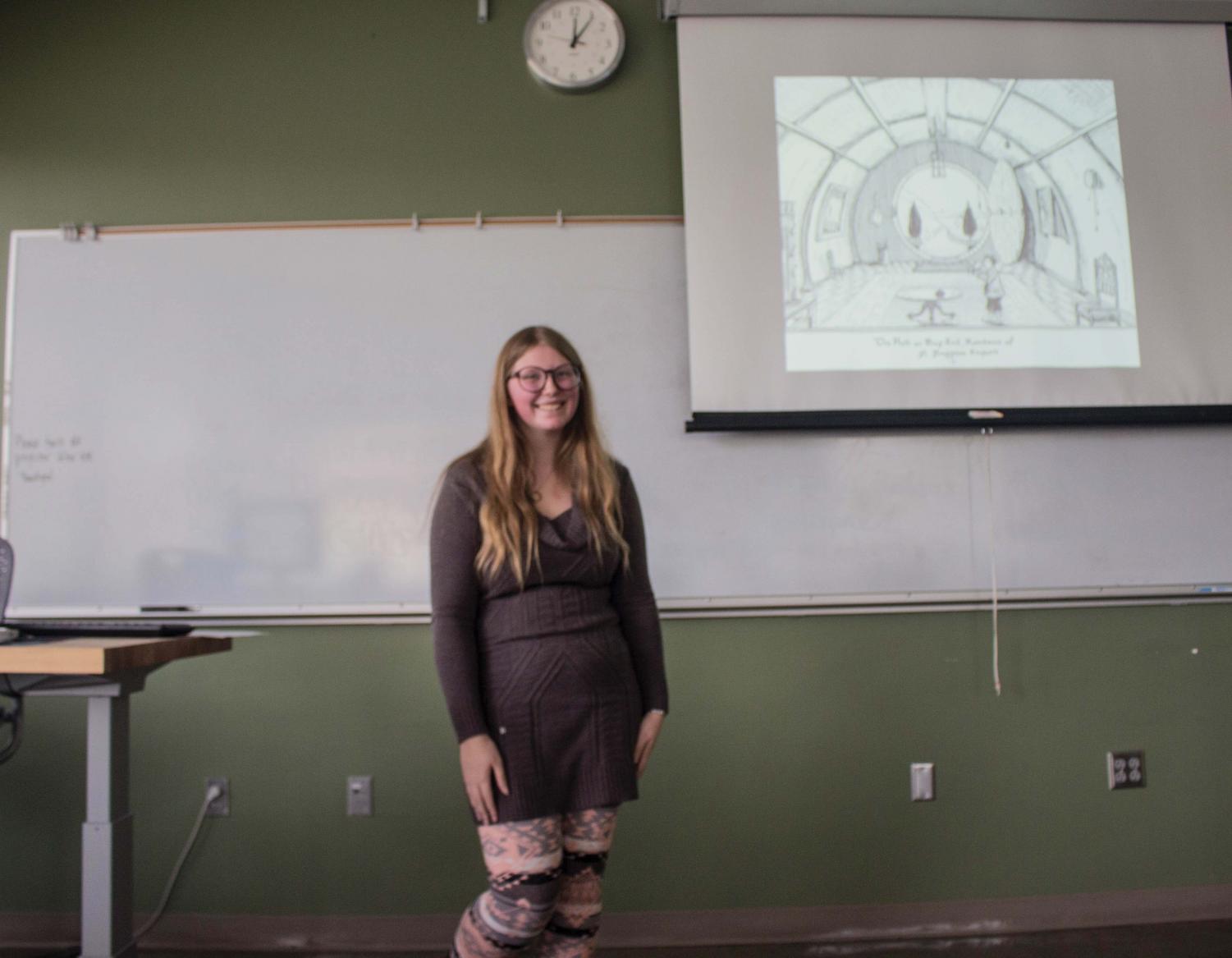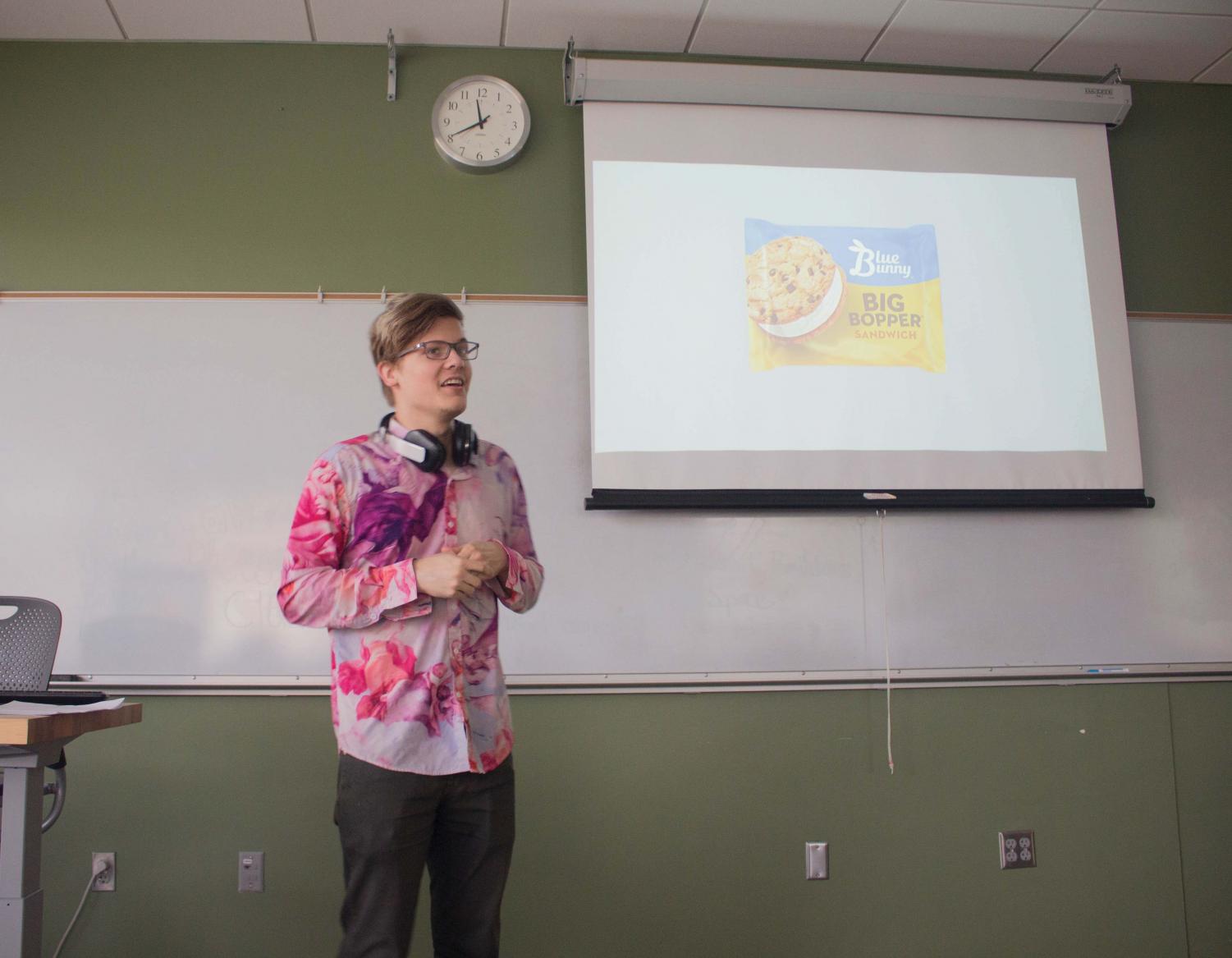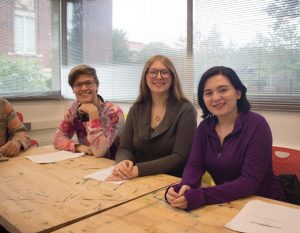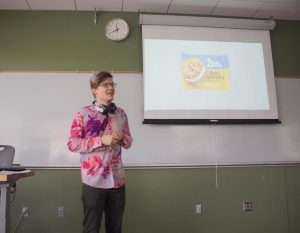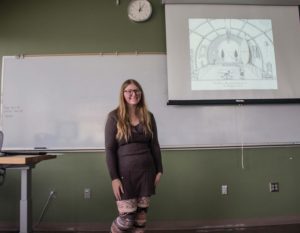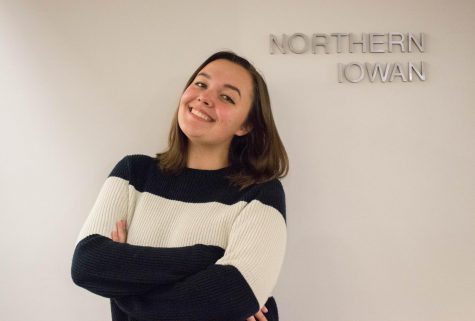Flash talks address inclusivity in art
Oct 11, 2018
Kinks, hobbits and gay subculture. These three topics were covered in flash talks that took place in Rod Library on Monday, Oct. 8 as part of the annual Iowa Museum Conference.
Other topics in the conference included legal issues in museums, the power of inclusivity in exhibits and the preservation of oral history.
One session titled “Flash Talks – Inclusive Art Exhibits Power” was presented by three UNI art students: Joel Wisner, Michelle Patrilla and Mariah Piippo. Wisner and Patrilla had been enrolled in the course “That’s So Gay: An Exploration of Homophobia and Camp in Art,” while Piippo was in the “Myth and Narrative in Art” course, both instructed by art history professor Charles Adelman in the Spring 2018 semester. While the topics covered in these classes varied from each other, they were both relevant to supporting the need for inclusivity in art and literature.
Wisner gave his speech on “The Vanillization of Kink Culture,” addressing the different aspects of how sex is viewed in society and in art — notably, what makes art sexual or not. He also discussed sexual nature in art created by gay artists, using Felix D’Eon as a main talking point.
“[D’Eon] uses his art as a tool with which to tell stories of historically oppressed and marginalized queer communities,” reads D’Eon’s biography on his website. “By painting images of queer love, seduction, sex and romance, the gay subject is stripped of its taboo nature.”
Patrilla’s flash-talk was over “Gay Subcultures,” discussing different identities and social groups in the LGBT+ community. Some examples included bears, otters, butch lesbians and lipstick lesbians. She also covered the Lavender Effect, a nonprofit project that helps educate the public on the historical contributions the LGBT+ community has provided, as well as advocating for equality and diversity.
Piippo closed the flash talks with her speech, “Concerning the Portrayal of Hobbits,” discussing the way hobbits have been depicted in various forms of media. Piippo had chosen to do her research project for her “Myth and Narrative” course on “The Hobbit.” Although it wasn’t a topic influenced by art and the LGBT+ community, Piippo tied it in with the day’s theme of diversity and inclusivity by demonstrating the similarities and differences between various artists’ depiction of the fictional characters.
Students in the “That’s So Gay: An Exploration of Homophobia and Camp in Art,” course also helped put together the show currently on display in the UNI Gallery of Art, creating labels and biographies for featured artists and making their research papers available to the public.
The exhibit was a collaboration between the students, Adelman and Gallery Director Darrell Taylor, whose own art is also on display in the show. The collaboration has allowed upper-level art history classes to investigate various objects, artworks and artists in affiliation with the theme of the class, creating labels, bios and research papers, which are then included in a full semester exhibit in the gallery.


